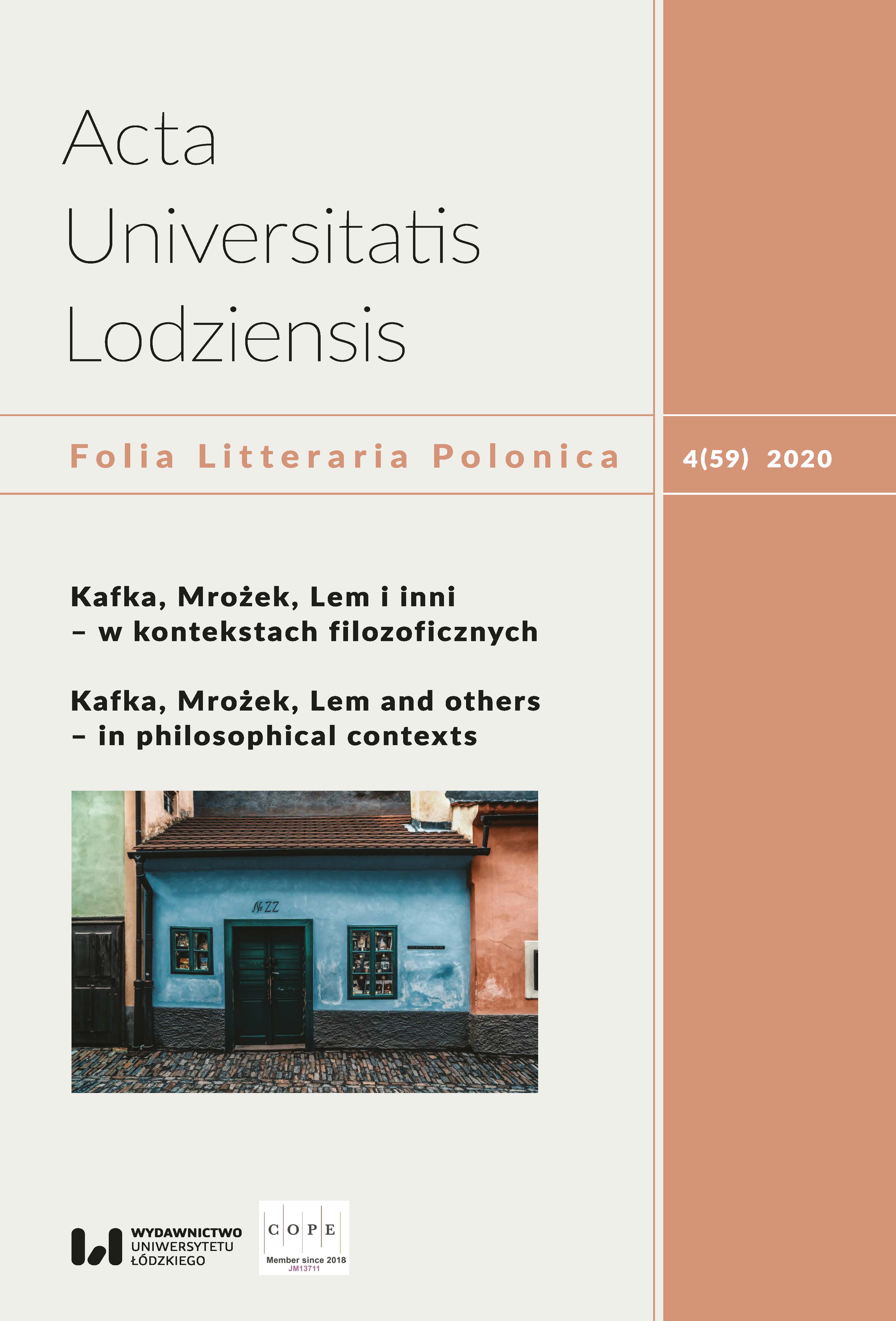Teatr zawsze umiera
DOI:
https://doi.org/10.18778/1505-9057.59.11Słowa kluczowe:
Communitas, Victor Turner, David Mamet, Marshall McLuhan, Ariane Mnouchkin, Dionizja, Jerzy Grotowski, Teatr laboratorium, Peter Brook, Charles Marowitz, Richard Schechner, Antonin Artaud, Herbert Blau, Samuel BeckettAbstrakt
Teatr zawsze umiera [The Theater Is always Dying] śledzi odporność spektakli teatralnych na żywo w obliczu konkurencyjnych form performatywnych, takich jak kino, telewizja i współczesne usługi przesyłania strumieniowego na osobistych, przenośnych urządzeniach, i koncentruje się na zdolności teatru do kontynuowania roli znaczącej siły kulturowej, społecznej i intelektualnej w obliczu takiej konkurencji. Przypominając Becketta, moglibyśmy zatem zasugerować, że teatr może być na najlepszej drodze umierania, ponieważ jego przedłużający się upadek wydaje się samoregenerować. Niezależnie od tego, czy „wychodzisz z teatru bardziej ludzko niż wtedy, gdy wchodzisz”, jak sugeruje Ariane Mnouchkin, czy też miałeś poczucie, że byłeś częścią, uczestniczyłeś w rytuale społeczności, Dionizja, czy niezależnie od tego, czy czułeś się dotknięty performatywem, ucieleśnione intelektualne i emocjonalne ludzkie doświadczenie może wpłynąć na to, jak oceniasz stan współczesnego teatru. Być może nie zawsze znasz odpowiedź na te pytania natychmiast po spotkaniu teatralnym, a może nawet celowo lub świadomie, ale mimo wszystko coś mogło się toczyć. Możesz okazać się „bardziej ludzki niż wtedy, gdy wszedłeś”.
Pobrania
Bibliografia
Beckett Samuel, Endgame, Grove Press, New York 1958.
Google Scholar
Brenman-Gibson Margaret, Clifford Odets: American Playwright: the Years from 1906–1940, Applause, New York 2002.
Google Scholar
Cage John, Empty Words: Writings ’73–78 by John Cage, CT: Wesleyan University Press, Middletown 1981.
Google Scholar
Dickson Andrew, Ariane Mnouchkine and the Théâtre du Soleil: a life in theatre, “The Guardian” 10.08.2012, https://www.theguardian.com/culture/2012/aug/10/ariane-mnouchkine-life-in-theatre (access 3.11.2020).
Google Scholar
Green Jesse, How Lucky We Are to Be Alive Right Now, “New York Magazine” (Vulture section) 7.03.2016, http://www.vulture.com/2016/03/new-york-theater-new-golden-age.html (access 3.11.2020).
Google Scholar
Kourlas Gia, The Medium Steps Behind the Medium, “The New York Times” 12.07.2009, https://www.nytimes.com/2009/07/13/arts/dance/13bard.html (access 3.11.2020).
Google Scholar
Marowitz Charles, Peter Brook at Eighty, “Swans” 6.06.2005, http://www.swans.com/library/art11/cmarow19.html (access 3.11.2020).
Google Scholar
McLuhan Marshall, Understanding Media: The Extensions of Man, McGraw Hill [Reissued MIT Press, 1994, with introduction by Lewis H. Lapham; reissued again by Gingko Press, 2003], New York 1964.
Google Scholar
Rockwell John, “Dance”: Lucinda Childs and Company, “The New York Times” 1.12.1979, https://www.nytimes.com/1979/12/01/archives/dance-lucinda-childs-and-company.html (access 3.11.2020).
Google Scholar
Shatz Adam, Desire Was Everywhere, “London Review of Books” 16.12.2010, vol. 34, no. 4, pp. 9–12, https://www.lrb.co.uk/v32/n24/adam-shatz/desire-was-everywhere (access 3.11.2020).
Google Scholar
“Theatre Arts Magazine” (1916–1964), https://archive.org/details/theatrearts01newyuoft (access 3.11.2020).
Google Scholar
“Theatre Arts Magazine” (1916–1964), https://catalog.hathitrust.org/Record/008888331 (access 3.11.2020).
Google Scholar
The Whitney Presents a Special Exhibition Exploring Lucinda Child’s Legendary Dance, “ArtDaily” 2008, https://whitney.org/artists/11377 (access 3.11.2020).
Google Scholar
Pobrania
Opublikowane
Jak cytować
Numer
Dział
Licencja

Utwór dostępny jest na licencji Creative Commons Uznanie autorstwa – Użycie niekomercyjne – Bez utworów zależnych 4.0 Międzynarodowe.











